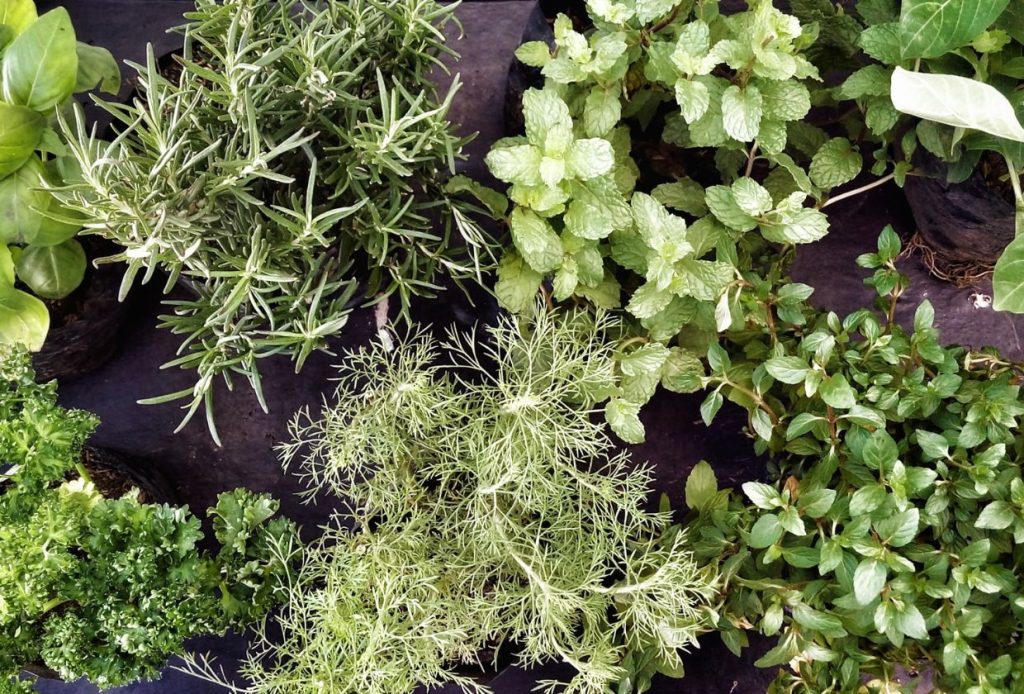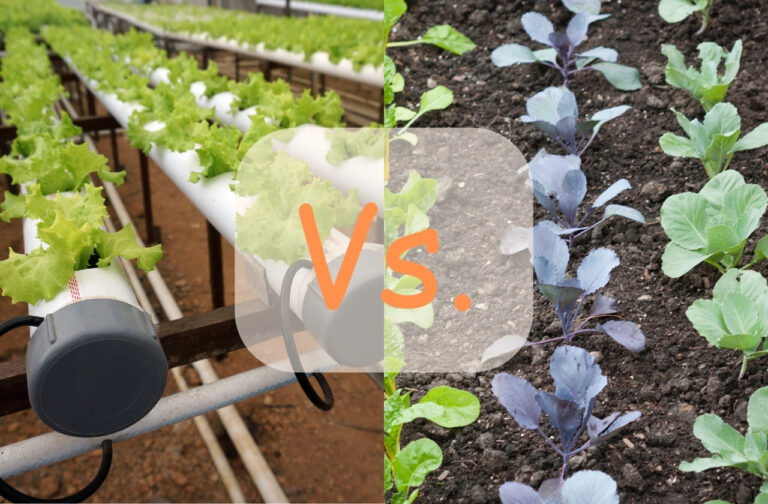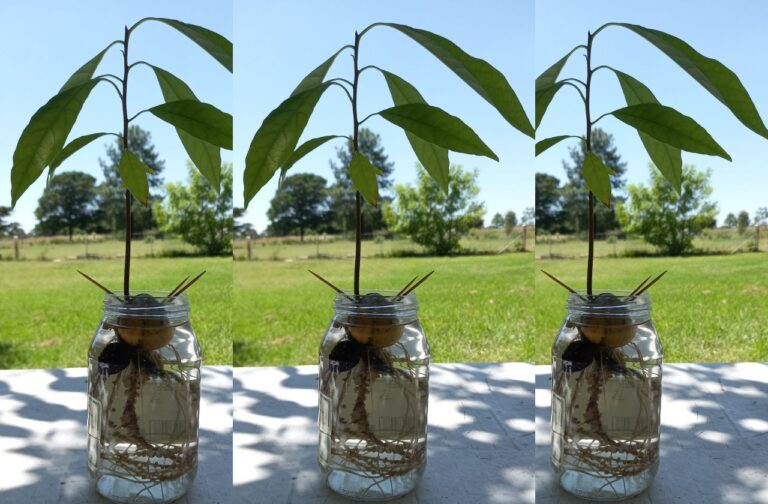Hydroponic Herb Gardens: Growing Fresh Herbs All Year Round
I get commissions for purchases made through links in this post. View our Affiliate Disclaimer.
Hydroponic herb gardens have become increasingly popular among garden enthusiasts and those seeking fresh herbs year-round. This innovative method of gardening eliminates the need for soil and allows plants to thrive in a nutrient-rich water solution.
By providing plants with a controlled environment, hydroponic herb gardens offer optimal growing conditions, resulting in healthier and more productive plants. Hydroponic systems provide a constant supply of fresh herbs all year round, regardless of the season.
If you have a desire to grow fresh herbs all year round and want to explore cutting-edge gardening techniques, hydroponic herb gardens are an excellent choice. This article will explore the world of hydroponics, highlighting the benefits of growing herbs hydroponically and providing step-by-step guidance on setting up and caring for your own hydroponic herb garden.
Understanding Hydroponics: A Brief Introduction
Hydroponics, a well-used method of growing plants without soil, offers a unique solution for cultivating fresh herbs year-round. In hydroponic systems, plants are grown in nutrient-rich water solutions instead of traditional soil. This allows for precise control over the growing conditions, ensuring optimal growth and yield.
One of the primary benefits of using hydroponics in gardening is the ability to grow herbs in any season. Traditional gardening methods are often limited by weather conditions and seasonal changes, making it difficult to maintain a consistent supply of fresh herbs.
Hydroponic systems, on the other hand, provide a controlled environment that can be adjusted to mimic the ideal conditions for herb growth. This means that herbs can be grown year-round, regardless of the weather outside.
Additionally, hydroponic systems require less space compared to traditional gardening methods, making them a viable option for those with limited garden space. The efficient use of space also allows for higher crop yields, ensuring a steady supply of fresh herbs for both personal and commercial use.
Hydroponic systems conserve water by recirculating it through the growing medium, making them environmentally friendly and cost-effective in the long run.
Overall, hydroponics offers a sustainable solution for individuals who desire a continuous supply of fresh herbs, regardless of the season.
Benefits Of Hydroponic Herb Gardens

The benefits of hydroponic herb gardens include increased yields, faster growth rates, and reduced reliance on soil and traditional gardening methods.
Hydroponic systems provide the cultivation of herbs throughout the year, regardless of seasonal limitations, offering a constant supply of fresh herbs.
These systems are designed to maximize the use of any available space, making them suitable for both indoor and outdoor settings.
Hydroponic gardens minimize the risk of disease transmission, as plants are not exposed to soil-borne pathogens, resulting in healthier and more productive herb growth.
These are some of the benefits of hydroponic herb gardens:
- Increased yields
- Faster growth rates
- Reduced reliance on soil
- Reduced reliance on traditional gardening methods
- Extended growing season
Year-Round Availability Of Fresh Herbs
One significant advantage of hydroponic herb gardens is the ability to cultivate and enjoy fresh herbs throughout the entire year. Unlike traditional gardening methods that are dependent on weather conditions and seasonal changes, hydroponic systems allow for the controlled environment necessary for year-round herb cultivation.
This means that regardless of the time of year, individuals can have access to a wide variety of fresh herbs for culinary purposes, enhancing the flavor and nutritional value of their meals.
Numerous Health Benefits

In addition to the convenience of having herbs readily available, hydroponic herb gardens also offer the opportunity to experiment with fresh herb recipes and explore the numerous benefits of using hydroponics for herb cultivation.
The table below illustrates the various herbs that can be grown hydroponically and their respective benefits:
| Herb | Benefits |
| Basil | Enhances digestion and has anti-inflammatory properties |
| Mint | Relieves indigestion and soothes headaches |
| Rosemary | Boosts memory and concentration, improves digestion |
| Cilantro | Detoxifies the body, aids in digestion |
| Thyme | Has antimicrobial properties, boosts the immune system |
| Oregano | Rich in antioxidants, may help fight infections |
| Parsley | High in vitamins A, C, and K, supports kidney health |
| Sage | Improves brain function and memory, has anti-inflammatory properties |
| Dill | Enhances digestion, supports bone health |
| Chives | Rich in vitamins A and C, aids in digestion |
By offering a wide range of herbs with various health benefits, hydroponic herb gardens not only provide a consistent supply of fresh herbs throughout the year but also allow individuals to explore different flavors and enhance their culinary experiences.
This accessibility to a diverse array of herbs can inspire creativity in the kitchen and promote a sense of belonging among individuals who share a passion for cooking and experimenting with fresh ingredients.
Space Efficiency And Disease Prevention
Space efficiency and disease prevention are important aspects to consider in the cultivation of herbs using hydroponic systems.
When it comes to space-saving techniques, hydroponic herb gardens have a clear advantage over traditional soil-based gardens. With hydroponics, plants can be grown vertically, utilizing the available space more efficiently.
Vertical gardening systems, such as tower gardens or hanging gardens, allow herbs to grow upwards, making the most of limited space. This is especially beneficial for those who have limited garden space or live in urban areas where outdoor gardening may not be feasible.
In addition to space efficiency, hydroponic systems also offer advantages in terms of disease prevention. Traditional soil-based gardening can be susceptible to various pests and diseases that can harm herb plants.
However, hydroponic systems eliminate the need for soil, reducing the risk of soil-borne diseases. By providing a controlled environment with nutrient-rich water, hydroponics can create a less hospitable environment for pests and diseases.
Hydroponic systems can incorporate pest prevention measures such as the use of beneficial insects or organic pest control methods, further reducing the risk of infestations.
The space-saving techniques and disease-prevention capabilities of hydroponic herb gardens make them an ideal choice for individuals looking to grow fresh herbs all year round.
Increased Plant Productivity
Increased plant productivity is a key advantage of utilizing hydroponic systems for cultivating herbs.
By providing plants with a controlled and optimized environment, hydroponic systems allow for increased crop yield compared to traditional soil-based methods.
In hydroponics, all plants are grown in nutrient-rich water solutions, which are carefully monitored and adjusted to meet the very specific needs of each herb.
This precise control over nutrient levels, pH, and water availability allows plants to receive optimal nutrition, leading to faster growth and higher yields.
Hydroponic systems also offer the advantage of optimizing plant growth through the use of advanced technologies.
For example, many hydroponic setups incorporate artificial lighting systems, such as LED grow lights, which can be tailored to provide the ideal spectrum and intensity of light for each stage of plant growth.
This ensures that plants receive the right amount of light energy for photosynthesis, promoting efficient and rapid growth.
Additionally, hydroponic systems can be equipped with automated monitoring and control systems, allowing for precise regulation of environmental factors such as airflow, temperature, and humidity.
These optimized conditions further enhance plant productivity by minimizing stress and providing an ideal growing environment.
Hydroponic systems offer increased plant productivity by providing plants with optimal nutrition and creating an optimized growing environment.
By utilizing precise control over nutrient levels, pH, and water availability, as well as incorporating advanced technologies like artificial lighting and automated control systems, hydroponics allows for faster growth and higher crop yields.
This makes hydroponic herb gardens a highly efficient and productive way to cultivate fresh herbs all year round.
Setting Up Your Hydroponic Herb Garden

Setting up a hydroponic herb garden requires careful planning and consideration. Factors such as the choice of growing system, nutrient solution, and lighting must be taken into account to create an optimal environment for herb growth.
Regular maintenance and monitoring are essential to ensure the proper functioning of the system and the health of the herbs.
When setting up a hydroponic herb garden, there are several key points to consider:
- First, choosing the right hydroponic system is crucial to ensure optimal plant growth and water management.
- Second, selecting the ideal herb varieties is important as different herbs have varying requirements for nutrients and lighting.
- Lastly, maintaining proper nutrient levels and lighting is essential for the overall health and productivity of the hydroponic herb garden.
Choosing The Right Hydroponic System
Hydroponic systems offer a variety of options for cultivating herbs, allowing individuals to select the most suitable method for their specific needs. There are different types of hydroponic systems available in the market, each with its own advantages and disadvantages.
One popular type is the nutrient film technique (NFT) system, where a thin film of nutrient-rich water flows continuously over the roots of the plants. This system is highly efficient in water and nutrient usage, making it ideal for growing herbs.
Another option is the deep water culture (DWC) system, where the plants are suspended in a nutrient-rich solution with their roots submerged. This method provides ample oxygen to the roots, promoting healthy growth and preventing root rot.
Additionally, there are also aeroponic systems, which mist the roots of the plants with a nutrient-rich solution. This method allows for maximum oxygen exposure and nutrient absorption, resulting in rapid growth and high yields.
What Are The Advantages Of Hydroponic Systems?
Growing herbs hydroponically offers several advantages over traditional soil-based cultivation:
- Firstly, hydroponic systems allow for precise control over the growing conditions, such as nutrient levels, pH, and water availability. This enables growers to optimize the growth of their herbs and maximize yields.
- Secondly, hydroponic systems eliminate the need for soil, which could reduce the risk of soil-borne diseases and pests. This promotes healthier plants and reduces the need for chemical pesticides.
- Additionally, hydroponic systems use significantly less water compared to traditional soil-based cultivation, making them more environmentally friendly.
- Hydroponic herb gardens can be set up indoors, allowing individuals to grow fresh herbs all year round, regardless of the weather conditions. This provides a consistent supply of herbs, ensuring that individuals can enjoy their favorite flavors and aromas at any time.
Selecting The Ideal Herb Varieties
This crucial aspect of herb gardening involves careful consideration of the specific characteristics and requirements of different herb species.
When selecting herb varieties for your hydroponic garden, it is essential to consider the benefits that herbs can bring to your overall well-being. Herbs not only add delicious flavor and aroma to our culinary creations but also possess various medicinal properties.
For instance, herbs like basil, mint, and rosemary are very rich in antioxidants with anti-inflammatory properties that can promote good health. Additionally, having a hydroponic herb garden allows you access to fresh herbs all year round, ensuring that you always have a plentiful supply of these beneficial plants.
To successfully select the ideal herb varieties for your hydroponic garden, it is essential to consider the specific hydroponic gardening techniques that you will be using. Different herbs have varying growth requirements, including light, temperature, and nutrient needs.
For example, basil thrives in warm temperatures and requires ample sunlight, while parsley prefers cooler temperatures and partial shade. By understanding these requirements, you can choose herb varieties that are well-suited to the specific conditions of your hydroponic system.
Considering the growth habits and sizes of different herbs is crucial to ensure that they can be accommodated in your hydroponic setup.
Selecting the ideal herb varieties for your hydroponic herb garden is an important step when creating a thriving and beneficial growing environment.
By considering the benefits that herbs offer and understanding the specific hydroponic gardening techniques, you can choose herb varieties that will flourish in your system and provide you with a constant supply of fresh and flavorful herbs throughout the year.
Maintaining Proper Nutrient Levels And Lighting

Maintaining proper nutrient levels and lighting is essential for the successful cultivation of herb varieties in a hydroponic system. To ensure optimal growth and development, it is important to carefully monitor and adjust the pH levels of the nutrient solution.
The pH level refers to the solution’s alkalinity or acidity, and different herb varieties have specific pH requirements for optimum nutrient uptake. By maintaining the pH within the appropriate range, typically around 5.5 to 6.5, the plants can effectively absorb nutrients and avoid deficiencies or toxicities.
Regular testing of the pH levels using a pH meter or test kit is necessary to ensure the accuracy of the readings. Adjustments can be made by adding pH up or pH down solutions to raise or lower the pH, respectively.
In addition to maintaining pH levels, proper lighting is crucial for the growth and development of hydroponic herb gardens. Since these systems rely on artificial lighting, it is important to provide the plants with the right intensity and duration of light.
Most herb varieties require around 12 to 16 hours of light per day for optimal growth. High-intensity discharge (HID) lights, like metal halide (MH) or high-pressure sodium (HPS) lamps, are commonly used in hydroponic setups due to their ability to provide the necessary intensity and spectrum of light.
LED lights are also gaining popularity due to their energy efficiency and customizable spectrum. It is important to position the lights at the appropriate distance from the plants to prevent light burn or insufficient lighting.
Regular monitoring of the light intensity and duration, as well as adjusting as needed, will ensure that the herb plants receive the light they need to thrive in the hydroponic herb garden setup.
Caring For Your Hydroponic Herb Garden
Caring for a hydroponic herb garden involves tasks such as monitoring and adjusting nutrient levels, maintaining the pH balance of the water, and ensuring adequate lighting and ventilation.
Proper care and attention must be given to ensure the optimal growth and health of your hydroponic herb garden. Hydroponic herb garden maintenance plays a crucial role in maximizing herb flavor and aroma.
One important aspect of caring for your hydroponic herb garden is monitoring and adjusting nutrient levels. Since hydroponic systems rely on nutrient solutions to provide plants with essential minerals and elements, it is crucial to regularly test the nutrient levels and adjust them accordingly.
This can be done by using a pH meter and an electrical conductivity meter to measure the pH and nutrient concentration of the solution. By maintaining the appropriate nutrient levels, you can ensure that your herbs receive the necessary nutrients for healthy growth and flavor development.
In addition to nutrient levels, proper lighting is essential for the optimal growth of your hydroponic herb garden. Herbs require a specific amount of light to carry out photosynthesis effectively.
LED grow lights are commonly used in hydroponic systems as they provide the right spectrum and intensity of light for plant growth. It is important to position the lights at the correct distance from the plants to prevent burning or stunting their growth. Most herbs require around 12-16 hours of light per day, so it is recommended to use a timer to automate the lighting schedule.
Regularly checking and adjusting the lighting setup will help ensure that your hydroponic herb garden receives the appropriate amount of light for healthy growth and maximum flavor and aroma development.
By paying attention to nutrient levels and lighting, you can provide the necessary care for your hydroponic herb garden, maximizing the flavor and aroma of your herbs all year round.
Common Issues In Hydroponic Herb Gardens
Troubleshooting common issues, such as nutrient deficiencies or pest infestations, requires a systematic approach to identify and address the underlying causes effectively.
With proper planning, care, and troubleshooting, hydroponic herb gardens can provide a rewarding and productive experience for herb enthusiasts and gardeners alike.
These are some of the problems that you are likely to encounter with your hydroponics herb garden:
Nutrient Deficiencies
One common issue that can arise in hydroponic systems is the occurrence of nutrient deficiencies or imbalances, affecting the overall health and growth of the plants.
It is crucial to monitor and maintain the pH levels of the nutrient solution. pH is a measure of acidity or alkalinity, and different plants have different pH requirements for optimal growth. When the pH level is too high or too low, it can affect the plant’s ability to absorb nutrients effectively.
To prevent nutrient deficiencies or imbalances due to pH levels, regular testing and adjustment of the nutrient solution are necessary. This can be done using a pH meter or pH test strips.
Adjusting the pH can be achieved by adding pH up or pH down solutions to raise or lower the pH, respectively. It is important to follow the instructions provided with the pH-adjusting solutions and make gradual adjustments to avoid sudden pH swings, which can stress the plants.
Root Rot
Another common issue in hydroponic herb gardens is the development of root rot which is a fungal infection that affects the roots, leading to their decay and, ultimately, the death of the plant.
To prevent root rot, it is essential to maintain proper oxygen levels in the root zone. Oxygen is crucial for root respiration and nutrient absorption. One way to ensure sufficient oxygen supply is by using an air stone or air diffuser in the nutrient solution. These devices create bubbles, increasing oxygen levels in the water.
It is important to prevent water stagnation by ensuring proper drainage and avoiding overwatering. Overwatering can lead to waterlogged roots, creating an environment conducive to the growth of harmful fungi.
Regularly inspecting the roots for any signs of discoloration or foul odor can help identify early signs of root rot. If root rot is detected, it is important to take immediate action by removing the affected plants and disinfecting the system to prevent further spread of the infection.
Conclusion
Hydroponic herb gardens offer a practical and efficient solution for growing fresh herbs all year round. Through the use of nutrient-rich water and a controlled environment, hydroponics allows for optimal growth and development of herbs, ensuring a steady supply of fresh and flavorful herbs regardless of the season.
Hydroponic herb gardens offer a reliable and sustainable method for growing fresh herbs throughout the year. By eliminating the need for soil and utilizing a controlled environment, hydroponics allows for optimal herb growth and ensures a continuous supply of flavorful herbs for culinary and medicinal purposes.
Get more posts like this
Subscribe to our mailing list and get interesting homesteading and green living info and updates to your email inbox.
Thank you for subscribing.
Something went wrong.







